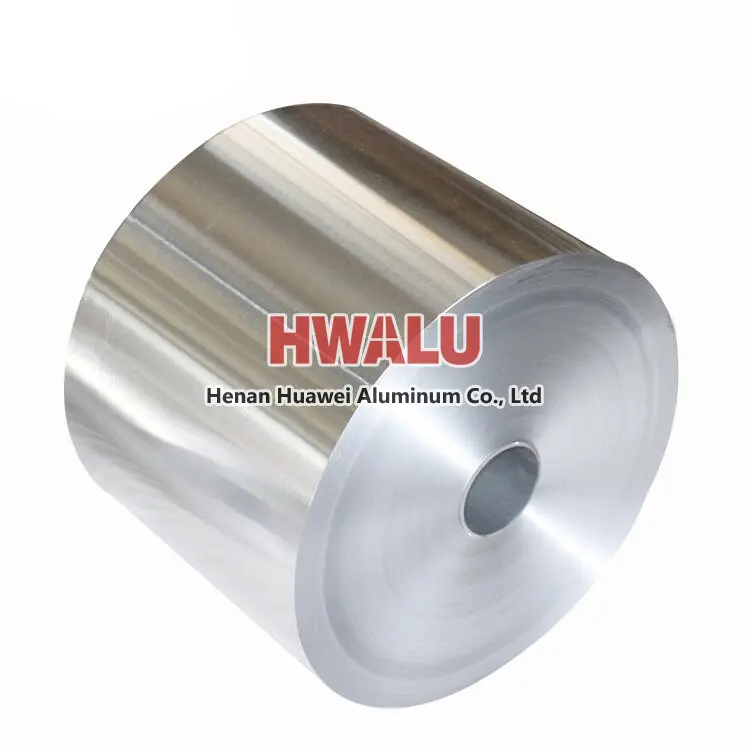What is Aluminum Foil for Pans Aluminum foil for pans is usually thicker and stronger than typical kitchen foil to withstand high heat and stress. Aluminum foil for pans can be used to cover the bottom of pans to keep food from sticking to them, and to make liners for steamers and bakeware to prevent food from sticking to the bottom or to the pan. The use of aluminum foil for pans is similar to that of ordina ...
What is aluminum foil for cake cup? Aluminum foil can be used for many purposes in baking, such as making cupcake cups or liners. Aluminum foil cake cups are cup-shaped containers used for baking cakes, cupcakes, or cupcakes, usually made of aluminum foil. Cake cup aluminum foil is used to wrap the bottom and sides of the cake cup to maintain the shape of the cake when baking, prevent sticking, and make the ca ...
What is aluminum foil for induction Aluminum foil for induction is a special aluminium foil material with the function of electromagnetic induction heating. It is commonly used to seal the lids of bottles, jars or other containers for sterile, airtight packaging. In addition, aluminium foil for sensing also has the advantages of easy operation, high efficiency and environmental protection. The working princi ...
Huawei Aluminum: Your Trusted Source for 50 Micron Aluminum Foil Welcome to Huawei Aluminum, your one-stop destination for high-quality 50 micron aluminum foil. We are a renowned aluminum foil factory and wholesaler, specializing in manufacturing and distributing a wide range of aluminum foil products. With a commitment to excellence and a focus on meeting the unique needs of our customers, we have established o ...
Introduction Welcome to Huawei Aluminum, your premier destination for high-quality 8011 O Temper Aluminum Foil in various micron thicknesses. As a reputable factory and wholesaler, we pride ourselves on delivering top-notch aluminum products that meet and exceed industry standards. In this detailed guide, we will explore the specifications, alloy models, applications, and advantages of our 8011 O Temper Aluminum ...
What is aluminum foil for transformers Aluminum foil for transformers refers to the aluminum foil used to make transformers. A transformer is an electrical device used to transform alternating voltage or current, consisting of an iron core and a winding. A winding consists of an insulated coil and a conductor, usually copper wire or foil. Aluminum foil can also be used as a winding conductor. Aluminum foil fo ...
Melting Point Of Aluminum Foil Do you know what melting point is? Melting point, also known as the melting temperature of a substance, is a physical property of a substance. Melting point refers to the temperature at which a solid substance changes into a liquid state. At this temperature, the solid begins to melt, and the arrangement of its internal molecules or atoms changes significantly, causing the subst ...
▌ Make bananas last longer Like avocados, bananas can go from underripe to overripe in the blink of an eye. This is because bananas release a gas called ethylene to ripen, and the stem is where the most ethylene is released. One way to prevent bananas from ripening too quickly is to wrap a small piece of aluminum foil around the stem. ▌ Polishing chrome with aluminum foil It can be used in places ...
Aluminum foil has good moisture-proof properties. Although pinholes will inevitably appear when the thickness of the aluminum foil is less than 0.025mm, when observed against light, the moisture-proof properties of aluminum foil with pinholes are much stronger than those of plastic films without pinholes. This is because the polymer chains of plastics are widely spaced apart from each other and cannot prevent wat ...
1. The raw materials are non-toxic and the quality is safe Aluminum foil is made of primary aluminum alloy after rolling through multiple processes, and it has no harmful substances such as heavy metals. In the aluminum foil production process, a high-temperature annealing and disinfection process is used. Therefore, the aluminum foil can be safely in contact with food and will not contain or help the growth o ...
The performance differences between 3003 aluminum foil and aluminum plate are primarily related to its physical and mechanical properties and its intended application. Here are some of the main differences in performance: Formability: 3003 Aluminum Foil: 3003 aluminum foil is highly formable and can be bent, formed and folded easily. It is often used in applications that require flexibility and ease of mold ...
Degreasing pollution is mainly manifested on the surface of the aluminum foil in 0 state. After the aluminum foil is annealed, it is tested by the water brushing method, and it does not reach the level specified in the water brushing test. The aluminum foil that requires the water-washing test is mainly used for printing, composite with other materials, etc. Therefore, the surface of the aluminum foil must be ...










